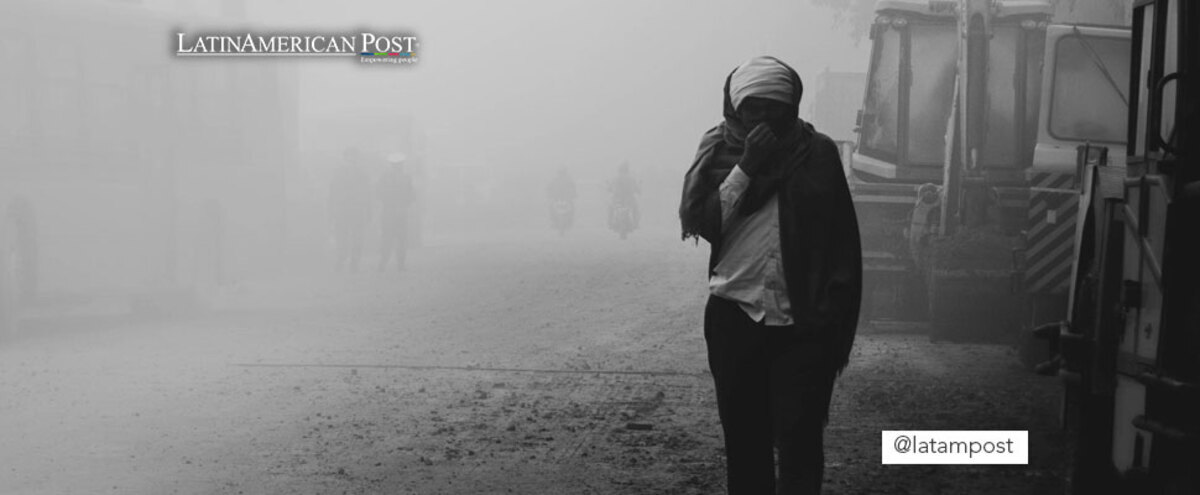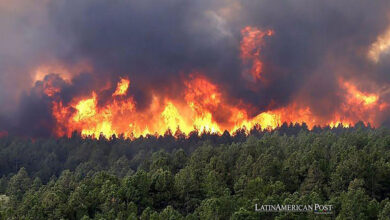99% of Humanity Breathes Polluted Air
According to a new report from the World Health Organization, which monitors air quality, the majority of the world's population breathes polluted air that threatens health.

Photo: Pexels
LatinAmerican Post | María Fernanda Ramírez Ramos
Listen to this article
Leer en español: El 99% de la humanidad respira un aire contaminado
Air pollution is becoming one of the main threats to the health of the population around the world. Not surprisingly, the lowest income countries are the most affected by this phenomenon. The World Health Organization updated its air quality database this year. This is a monitoring that has been done since 2011 and has not been updated since 2018.
In this new edition, more than 6,000 cities in 117 countries were analyzed and, for the first time, annual ground measurements of nitrogen dioxide concentrations, a very common pollutant in urban centers, were included. Likewise, other types of polluting particles were measured, which due to their small diameter can cause damage to the health of the population. What is the common factor of these contaminants? Both are related to the burning of fossil fuels.
“High fossil fuel prices, energy security, and the urgency to address the twin health challenges of air pollution and climate change underscore the pressing need to move faster toward a world that is far less dependent on fossil fuels," said WHO Director-General Tedros Adhanom Ghebreyesus.
We recommend you read: Oil and gas production must end by 2050 according to experts
What is the impact on health?
According to Dr. Maria Neira, Director of the WHO Department of Environment, Climate Change and Health, air pollution can cause 7 million preventable deaths.
Nitrogen dioxide is associated with asthma and a number of other respiratory illnesses that can lead to hospital admissions. For its part, particulate matter has the ability to penetrate the bloodstream and the lungs, having harmful effects on the cardiovascular, respiratory and cerebrovascular systems, even causing strokes. In fact, research is currently being carried out to determine what other diseases could be associated with this phenomenon of air pollution.
Nitrogen dioxide or NO2 is associated with respiratory diseases, particularly asthma, leading to respiratory symptoms (such as coughing, wheezing or difficulty breathing), hospital admissions and visits to emergency rooms https://t.co/Llaj2wHk0V#HealthierTomorrow https://t.co/2XKikIXPmo
— World Health Organization (WHO) (@WHO) April 4, 2022
Who are the most affected?
According to the report, "higher-income countries see less particulate pollution, but most cities have problems with nitrogen dioxide." This means that the problem of nitrogen dioxide is present throughout the world. In addition, it was found that in low- and middle-income countries, only 1% of the cities analyzed meet the air pollution thresholds recommended by the WHO. Meanwhile, in high-income countries, 17% of cities do not meet these guidelines.
However, it is possible to make a criticism of this report, since it is also the countries with higher incomes that have the largest numbers of air quality measurement systems. In this sense, Europe, North America and some regions of Asia are ahead of the others. For example, of the 57 countries the report considers high-income, air quality is monitored in 51. Meanwhile, 145 countries are considered to be in the low- and middle-income group. Of these, only 66 air quality is measured.
For example, Africa is one of the places where the highest amount of air pollution has been found, but data is only available for 12 countries. For its part, in the Americas there are data from 22 countries. This allows us to deduce that if resources are not allocated to this type of technology, essential for analyzing data and taking actions in favor of health and the mitigation of the impact of pollution, inequalities will be greater. In this regard, despite the fact that the WHO designs a series of global guidelines and directives on air quality, which aim to save lives, it will be difficult to achieve compliance with these standards if there is not even prior monitoring of conditions.




